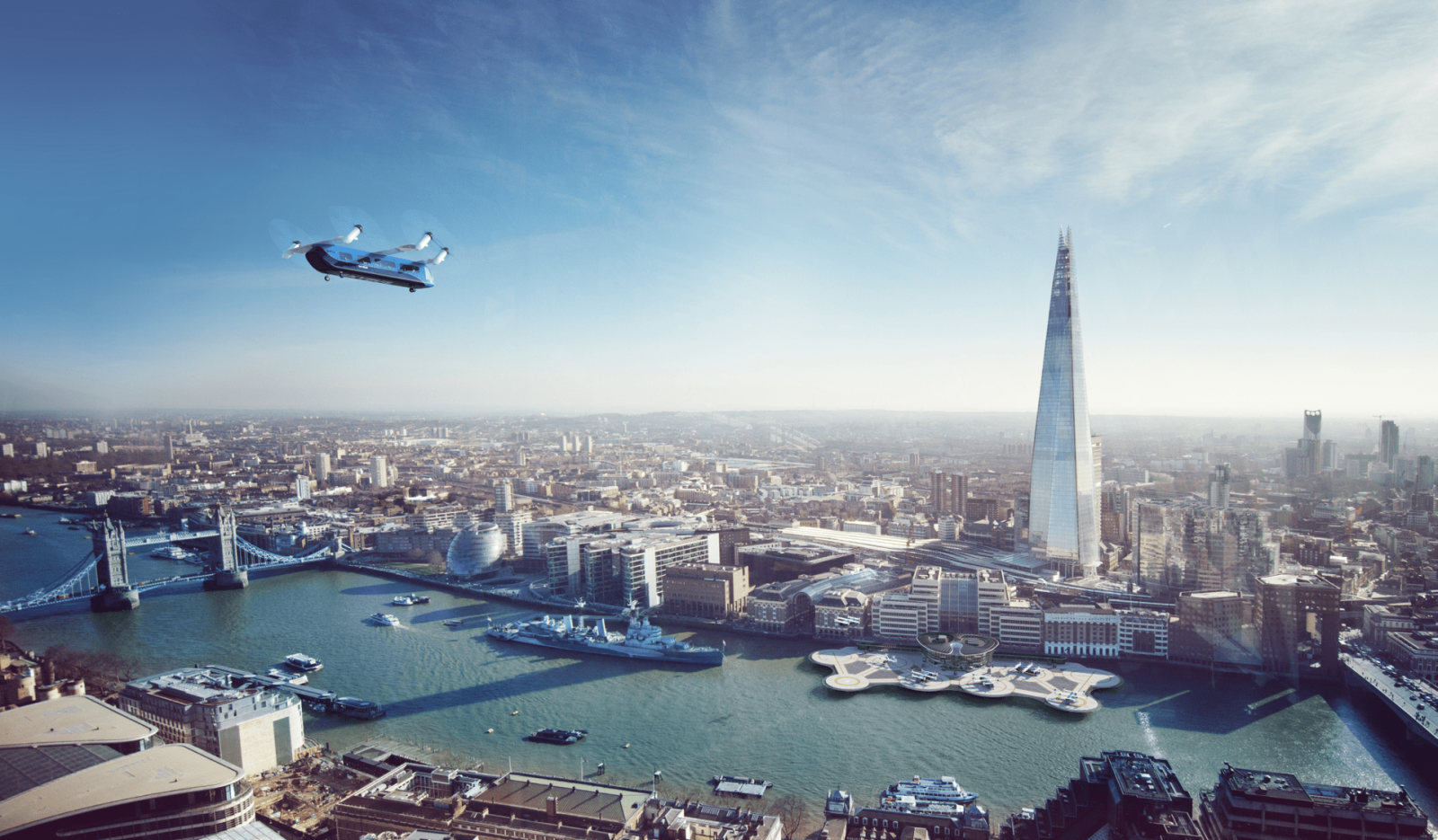
A UK consortium known as Skybus has completed a feasibility study for using a large-size electric vertical takeoff and landing (eVTOL) aircraft as a form of mass aerial transit that might operate like the organization’s name.
The Skybus study looks into the possibilities of flying a six-rotor, 30-person eVTOL craft as a mass-user urban air mobility (UAM) expansion of air taxi concepts. As such, the project has explored how those larger craft might operate alongside the smaller, usually three- to five-passenger vehicles being developed to offer on-demand inner-city air transport like air taxis. The main idea remains the same – lifting traffic now clogging the world’s roads into the skies with emissions-free alternatives – but with Skybus aiming to do so in something closer to mass transit capacities.
The Skybus consortium is led by UK Tier 1 UAM platform airframe supplier GKN Aerospace, in collaboration with Swanson Aviation Consultancy, Pascall+Watson, and Connected Places Catapult. The initiative was launched in 2021 and funded by the UK’s Future Flight Challenge, a four-year, $165.5 million program promoting innovation in air transport operating within the UK Research and Innovation organization. Its objective is to “bring together technologies in electrification, aviation systems, and autonomy to create new modes of air travel and capability.”
In its feasibility study, Skybus says it has identified significant opportunities for larger eVTOL craft to operate alongside air taxis in future UAM networks. To facilitate that, it has developed a Thames River-based vertiport concept, economic models, and demand forecasts for a London area intra-city use case.
Within that, the eVTOL sky-buses would service scheduled routes to vertiports the way ground coaches currently travel from stop to stop. Those regular, higher-capacity runs would complement, and probably geographically broaden on-demand operation of smaller air taxis. As technology evolves to extend flight capabilities, those larger aircraft might also be used to access more remote areas, such as islands and mountainous regions.
“We are committed to a more sustainable future for aviation, and we believe there is no single solution to achieve this It will take a range of technologies and collaboration across the whole industry to achieve our net zero goal,” says GKN Aerospace CTO Russ Dunn. “Skybus is a great example of GKN Aerospace’s ambition to work in partnership to inspire our customers into new markets, products and technologies.”
In addition to offering a blueprint for more diversified and accessible eVTOL services to all kinds of future users, the Skybus plan would fulfills Future Flight Challenge goals of advancing UAM solutions that reduce overall travel time, cost, and emissions for all travelers involved.
“The Future Flight Challenge has always taken a broad view of the opportunities provided by the many different types of novel clean aircraft emerging,” says Gary Cutts, Future Flight Challenge director at the UK Research and Innovation. “Our market studies show a real potential for a substantial distributed aviation system using the types of aircraft concept envisaged by the Skybus consortium and we welcome the system-wide insights gained from their feasibility studies.”
A similar plan for inner- and intra-city mass UAM transport using a 40 passenger eVTOL was launched in New York last year by startup Kelekona.
Photo: Pascall+Watson
FTC: We use income earning auto affiliate links. More.


Comments